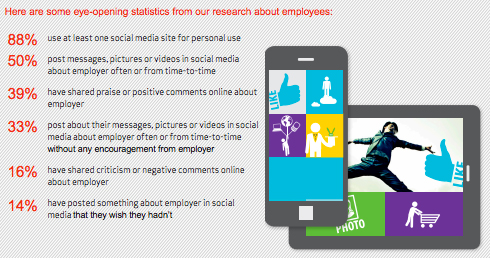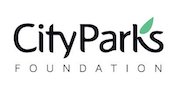Employees are the best defenders of a corporate reputation, but many companies do little to cultivate and motivate these potential brand ambassadors, said Leslie Gaines-Ross, chief reputation strategist at Weber Shandwick.
She made that point while she unveiled results of a survey conducted by the Interpublic unit and KRC Research today during a panel discussion at Hearst Tower in New York. The session was billed as “Employees Rising: Seizing the Opportunity in Employee Activism.”
 Executives from LinkedIn, Zappos, Dell and Dynamic Signal served as fellow panelists.
Executives from LinkedIn, Zappos, Dell and Dynamic Signal served as fellow panelists.
The survey found that nearly six in ten (56 percent) of respondents have either defended their company to friends/family member or publicly via blog, website or newspaper.
That figure of “first responders” rose to 59 percent during a top-tier change event such as merger/acquisition, downsizing, crisis or disaster.
Employee engagement, however, is falling short. Only 42 percent of workers’ “know enough to explain to others what my employer does,” according to the survey. Only about four in ten (37 percent) understand their company’s goals.
Gaines-Ross talked about the “big bang” impact of social media on staff activism.
WS believes the next frontier for organizational change is how executives use digital communications and modeling internally.
The research found that half of employees post messages, pictures or videos in social media about an employer either often or from time-to-time.
Nearly four in ten (39 percent) have shared praise or positive comments online about their employer, while a third use social media for messages about an employer without any encouragement.
Gaines-Ross noted the lines between work and personal lives barely exist. It’s up to companies to embrace that reality to understand what drives workers to become positive activists.
She reviewed the six segments of the workforce activism spectrum.
Forty-seven percent of workers are defined as either ProActivists (highly social workers with positive actions) or “PreActivists” (mostly positive actions with some negative activity).
Twenty-two percent are “InActives,” showing little motivation to do a good job, 13 percent are “Detractors,” 11 percent are “ReActivists,” exhibiting an average level of engagement, and seven percent are “HyperActives,” having the most potential to help or damage a corporate reputation.
The WS playbook calls for customized strategies and tactics aimed at each section of the activism spectrum.
The goal is to identify a “band of employees” who will spread the right corporate messages and recruit others to defend a company during a crisis or when ncreased outside scrutiny.


 Navigating the delicate balance between the art of perception and the science of strategic communication is paramount for fostering a positive corporate reputation.
Navigating the delicate balance between the art of perception and the science of strategic communication is paramount for fostering a positive corporate reputation. City Parks Foundation is looking to hire a firm to handle PR connected to its arts programming, which includes New York City’s largest free outdoor festival, SummerStage.
City Parks Foundation is looking to hire a firm to handle PR connected to its arts programming, which includes New York City’s largest free outdoor festival, SummerStage. Sacramento seeks a PR firm to develop a multi-media campaign to generate awareness of its Cannabis Opportunity Reinvestment and Equity program.
Sacramento seeks a PR firm to develop a multi-media campaign to generate awareness of its Cannabis Opportunity Reinvestment and Equity program. Fathers are drastically losing market share, particularly to mothers, but also to grandmothers and even to teenage babysitters and complete strangers.
Fathers are drastically losing market share, particularly to mothers, but also to grandmothers and even to teenage babysitters and complete strangers. Management's behavior and the ways in which organizations impact society are now widely responsible for our perceptions of companies, according to a global study released by FleishmanHillard. (7 reader comments)
Management's behavior and the ways in which organizations impact society are now widely responsible for our perceptions of companies, according to a global study released by FleishmanHillard. (7 reader comments)


 Have a comment? Send it to
Have a comment? Send it to 
No comments have been submitted for this story yet.